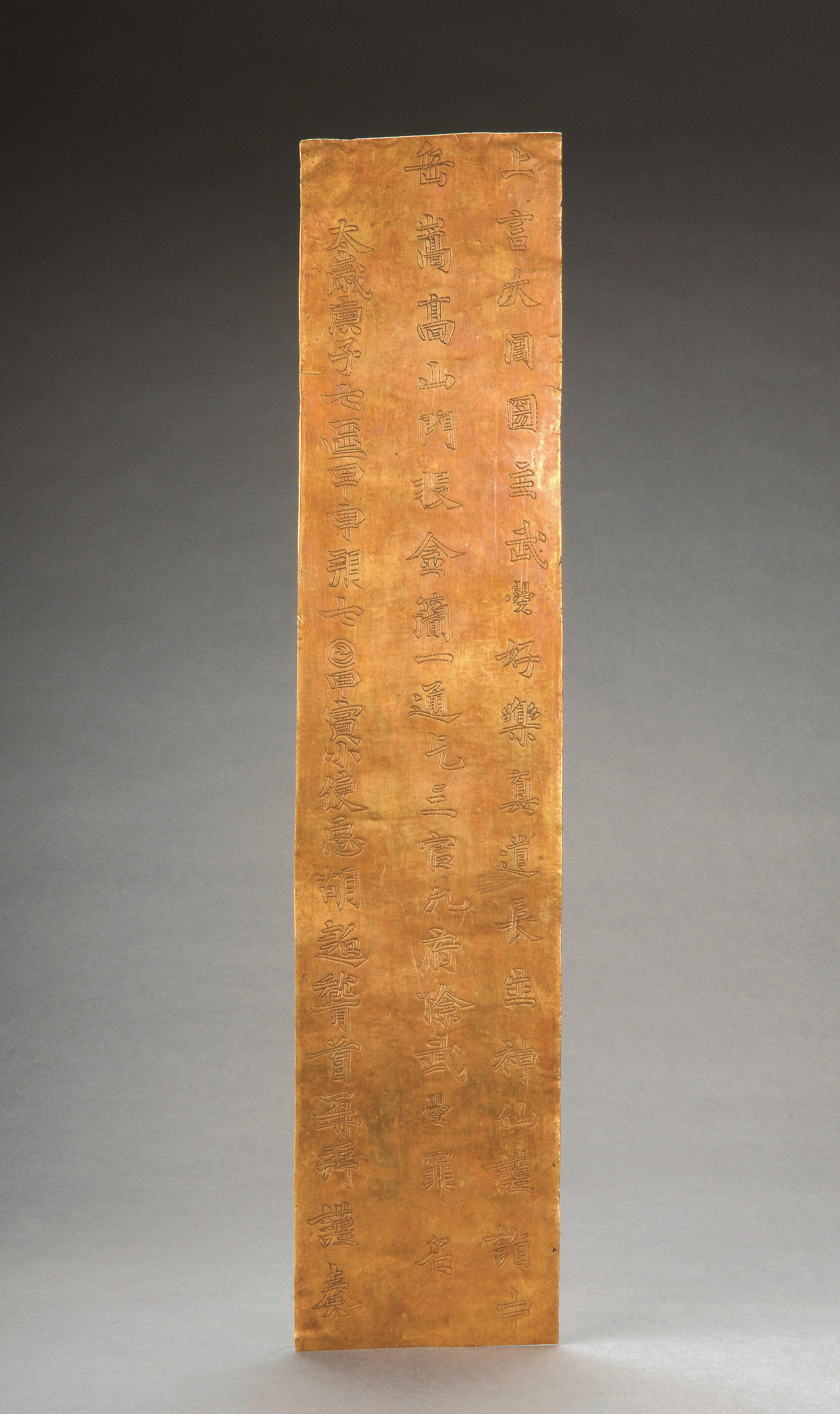Date: 700, Tang Dynasty (618-907)
Provenance: Discovered on the northern side of Junji Peak of Mount Songshan, Dengfeng county, 1982
Measurements: Length: 36.2 cm, Width: 8 cm, Weight: 223.5 g
This gold strip is made of 96-percent pure gold.
A strip, known as jian in Chinese, refers to an ancient form of conveyance bearing words of a self-introduction or expression. Emperors during the Tang and subsequent dynasties frequently observed the ritual of "hurling strips" as part of their sacrificial ceremonies to the gods of Heaven and Earth. A strip for this purpose could be made of jade, silver, bronze, and very rarely of gold, was ceremoniously thrown on a sacred mountain, buried underground, or cast into a pond.
During her journey in 700, the inaugural year of the Jiushi reign, Wu Zetian, China's only female emperor with a reign lasting over 40 years, lodged in Sanyang Palace in Gaocheng county. Devoted to Taoism, she sent a Taoist priest named Hu Chao to deliver a letter to the gods on Junji Peak of Mount Song, to absolve her sins and disperse evils. The message was carved onto this gold strip, which consists of 63 outlined Chinese characters, and translates as the following:
"Emperor Wu Zhao of the Great Zhou, in her piety and faith to the true principles of Daoism, is desirous of longevity without aging and to ascend to the state of immortality. Thus she has entrusted a great man to come to the Heavenly Gate upon Mount Song, to deliver this gold strip, entreating the Three Offices and Nine Bureaus to absolve her of any wrong doing. The gold strip is sent by Wu Zhao's envoy Hu Chao with due respect, on the seventh day of the seventh lunar month of the lunar calendar, in the year of gengzi (700)."
The gold strip is a rare and invaluable relic, surviving through time as a movable testament to the emperor's legacy. It enhances our knowledge and research into the course of Wu Zetian's life, and the development of her ideological direction in her later years.

